If the most athletic you like to get when in Paris is to stroll along the Seine (croissant, rather than weights, in hand), you might be finding it a stretch to work yourself up into an Olympic mood. In this case, The Alternative Paris Olympics are for you! These are the events that are in much better synchronicity with the usual gentle pace of the City of Light. Read on for ten ways to get into the sporty spirit à la parisienne …
Event One – ‘Sailing’

First up: Sailing at the Jardin du Luxembourg. Take a ringside signature-green seat by the octagonal basin behind the old palace, and watch the kids push hand-carved sailboats around the water, as Parisian children have been doing for decades. It’s a most relaxing, meditative way to while away some time, and a perfect way to occupy any children of your own who might be in tow.

Boats cost €6 to rent for a half-hour, and are available Wednesday afternoon and weekends, as well as during school and public holidays (except for the three months of winter). In a lovely Olympian touch, most of these boats fly a national flag, so you can also indulge in a little breezy patriotism, if you’re so inclined.
Event Two – ‘Equestrian’

Meander around the Jardin du Luxembourg to find the vintage carousel with its whimsical, peeled-paint horses (and occasional giraffe and camel). Dating from 1879, this simple but sweet merry-go-round is the oldest in Paris and is unique for its ‘rings game’ — where children on the outer horses ride around holding mini batons, and attempt to spear and collect metal rings that hang from a contraption held by the ever-patient operator.

Fun fact: This jeu de bagues can trace its story back to the knightly tournaments of medieval times. After jousting was banned by Catherine de Medici (whose husband died during one brutal encounter), tournaments evolved into an elaborate version of an equine extravaganza known as un carrousel. Carousel games included ring tilting, where players would ride their horse, lance in hand, towards a ring, which was usually hanging from a pole by a ribbon. The aim was to spear the highest number of rings. To hone their ring-spearing skills, noblemen practised on a device that consisted of rudimentarily carved wooden horses suspended from beams radiating out from a central pole; to the side, rings hung off another pole, waiting to be speared. Oui: the earliest prototype of today’s merry-go-round.
Event Three – ‘Trampolining’
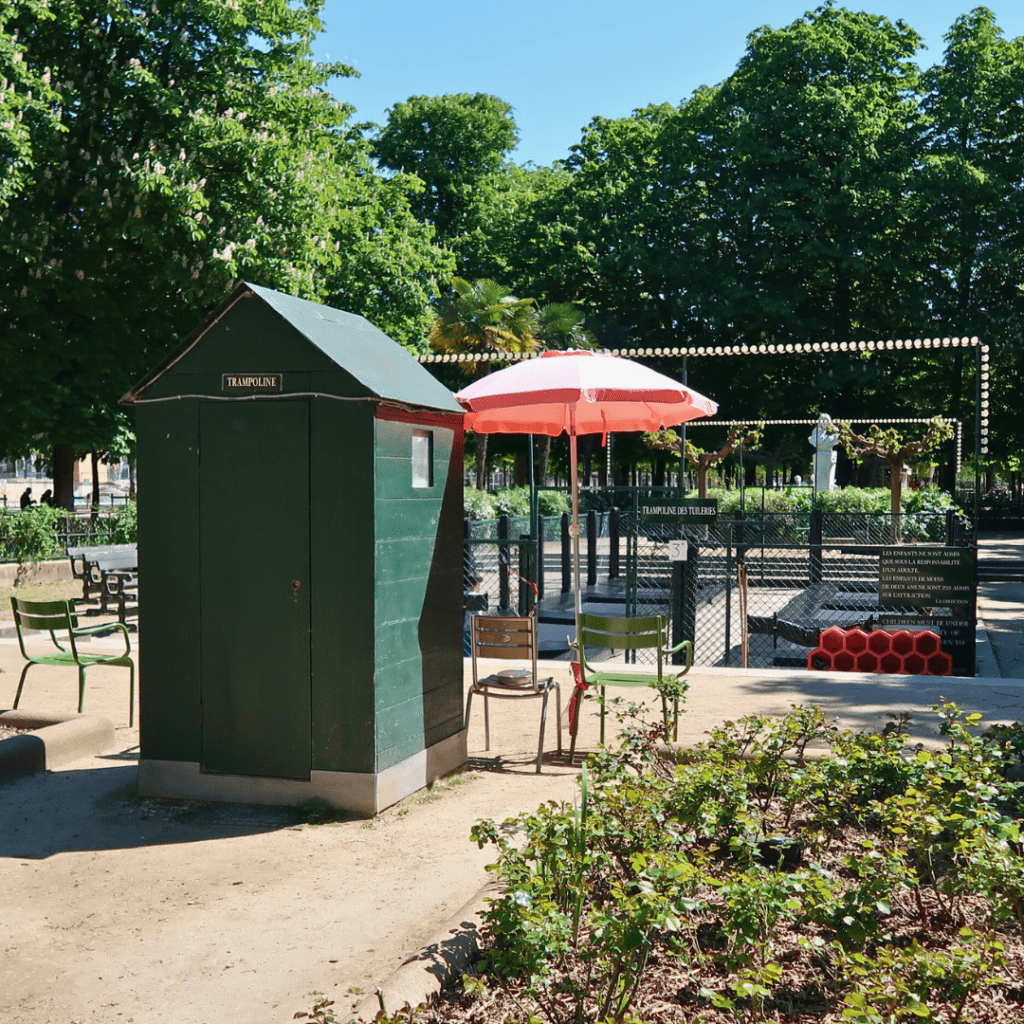
Wander over to Paris’s other main park, the Jardin des Tuileries, where you’ll find a trampoline playground in the north-western corner. Participants must be twelve and younger, so it’s the ideal activity if you’re in Paris with young kids. But at any age, it’s a lovely nostalgic nook to walk by.

Fun fact: Tucked into the greenery to the east of the trampolines is a statue of Charles Perrault, he of Cinderella, Puss in Boots, and Sleeping Beauty fame. Before Monsieur Perrault put plume to paper, he worked in the department for royal buildings. During that time, the celebrated royal gardener André Le Nôtre, after glorifying the grounds of Versailles Palace, turned his attention to the Tuileries, refashioning it into an elegant park of ponds, flower-laced parterres, tree-shaded terraces, and fragrant groves. So delighted with the result was the superintendent, Jean-Baptiste Colbert, that he planned to make the gardens private for the pleasure of King Louis XIV. It was Perrault, Colbert’s assistant, who successfully pleaded the case for the Tuileries to stay open as a park for all Parisians.
Event Four – ‘Tennis’
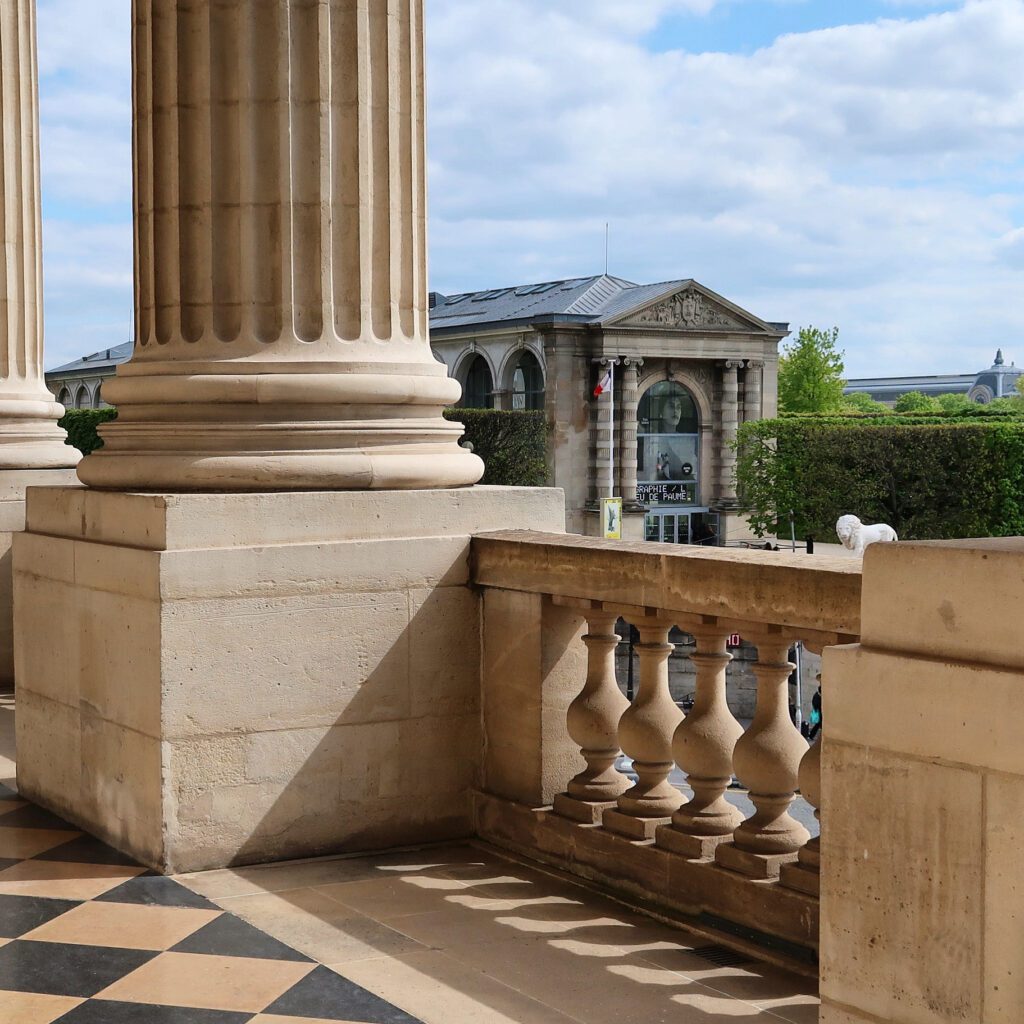
Continue to the very north-western corner of the Tuileries, to the majestic greenhouse-style hall known as the Jeu de Paume. The term jeu de paume translates directly as ‘game of the palm,’ which is said to be the precursor to today’s tennis. Originating in the twelfth-to-thirteenth centuries, jeu de paume was popular in Paris through to the late 1800s, by which time tennis, as we know it, was starting to take over. If you’re not a fan of tennis of any kind, you might be happy to know that the Jeu de Paume, which was built in 1862, is no longer a sport venue — it’s a museum dedicated to photography, cinema, and contemporary art.
Event Five – ‘Beach Volleyball’

So, you’re more likely to see kids wielding buckets than athletes rallying balls, but this pit in the Jardin du Palais-Royal has to be the loveliest patch of sand in Paris. It’s situated right beneath the window of author Colette’s one-time apartment, and sitting here makes you a spectator of a world that suddenly seems so much lovelier — the world that Colette loved so much. Her spirit, in fact, is everywhere throughout this gem of a garden. The rose bushes that would have had the sentimental writer in raptures. The pond by which she read. The linden trees she used to lean out and admire, lined up in neatly trimmed rows.
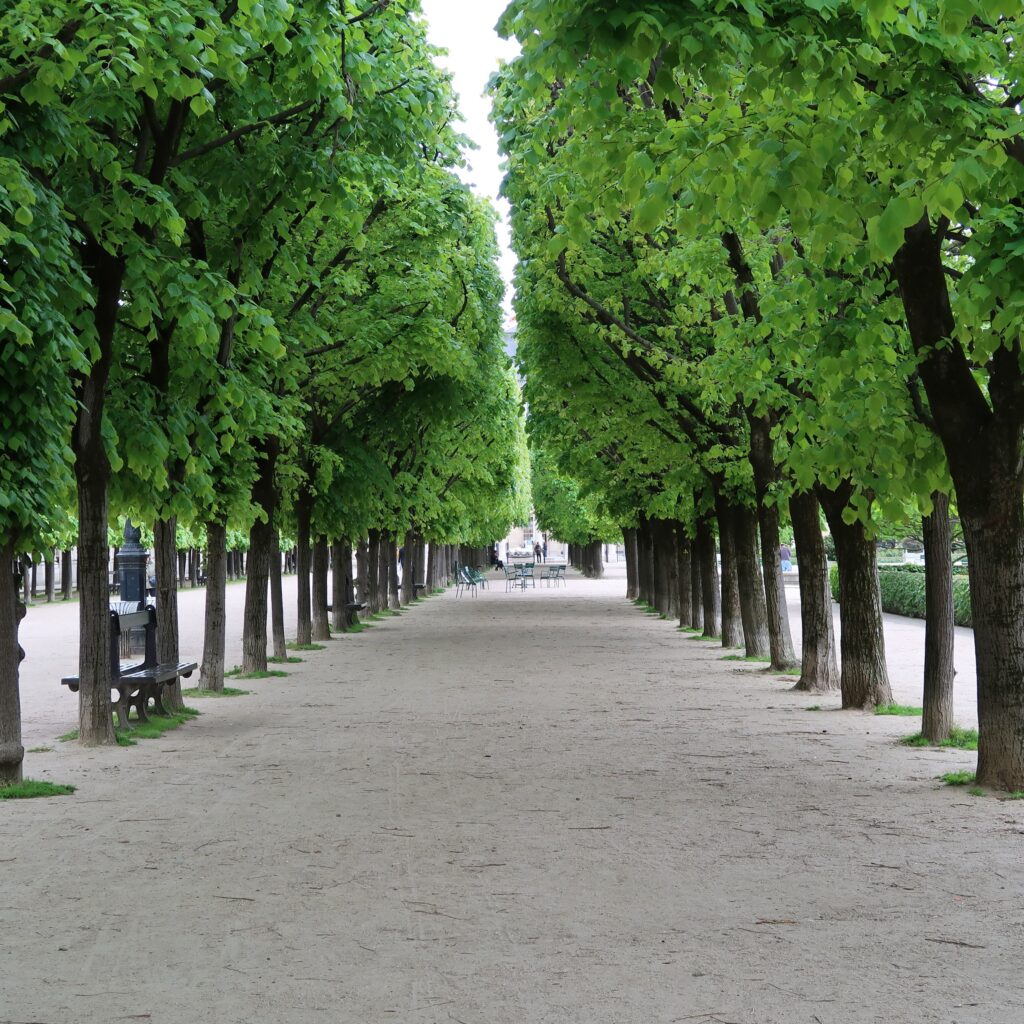
If you’re feeling active, these trees form sun-dappled allées that are a delight to walk up and down. As you do, read the inspiring Colette quotes that are etched onto the garden benches, such as: “To be astonished is one of the surest ways of not growing old too quickly.”
Event Six – ‘Basketball’
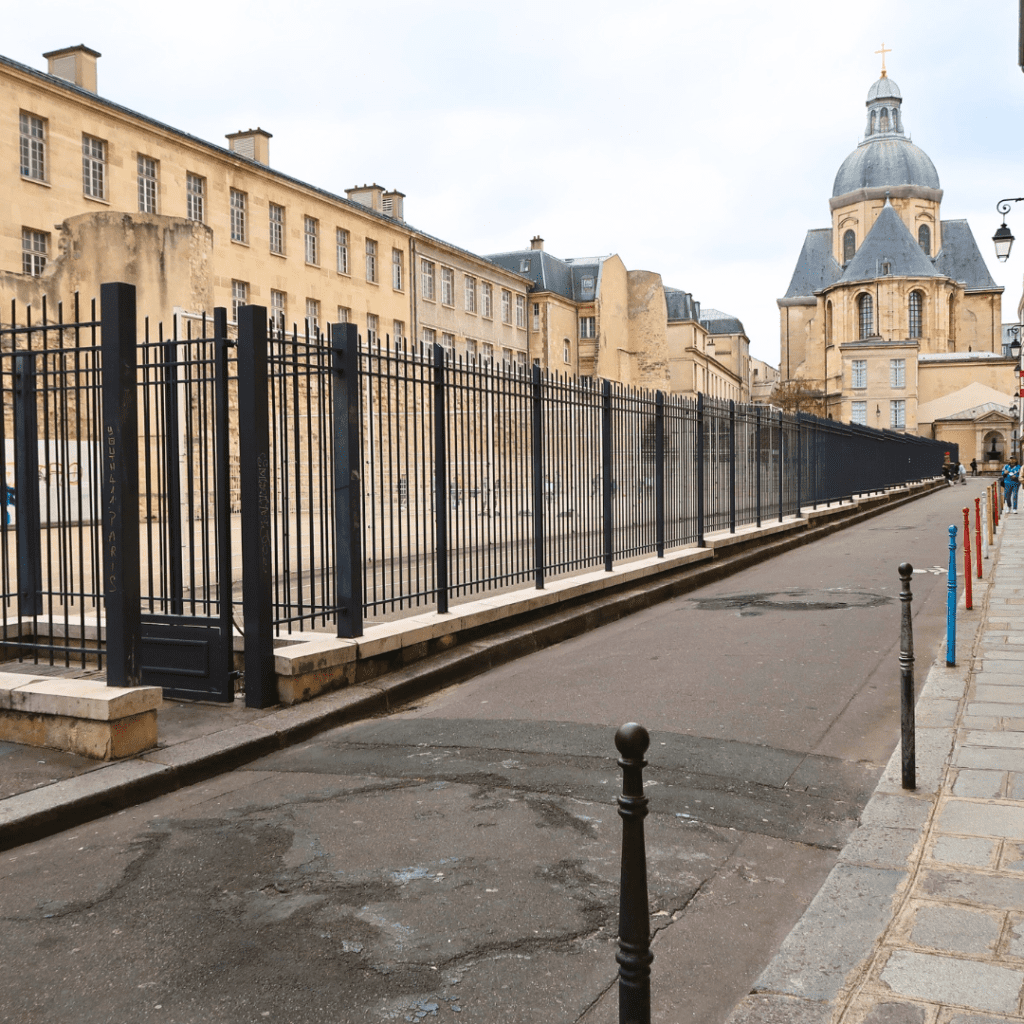
Wander further eastwards to the Rue des Jardins Saint-Paul in the Lower Marais, where you’ll be able to watch the most historic basketball matches in town.
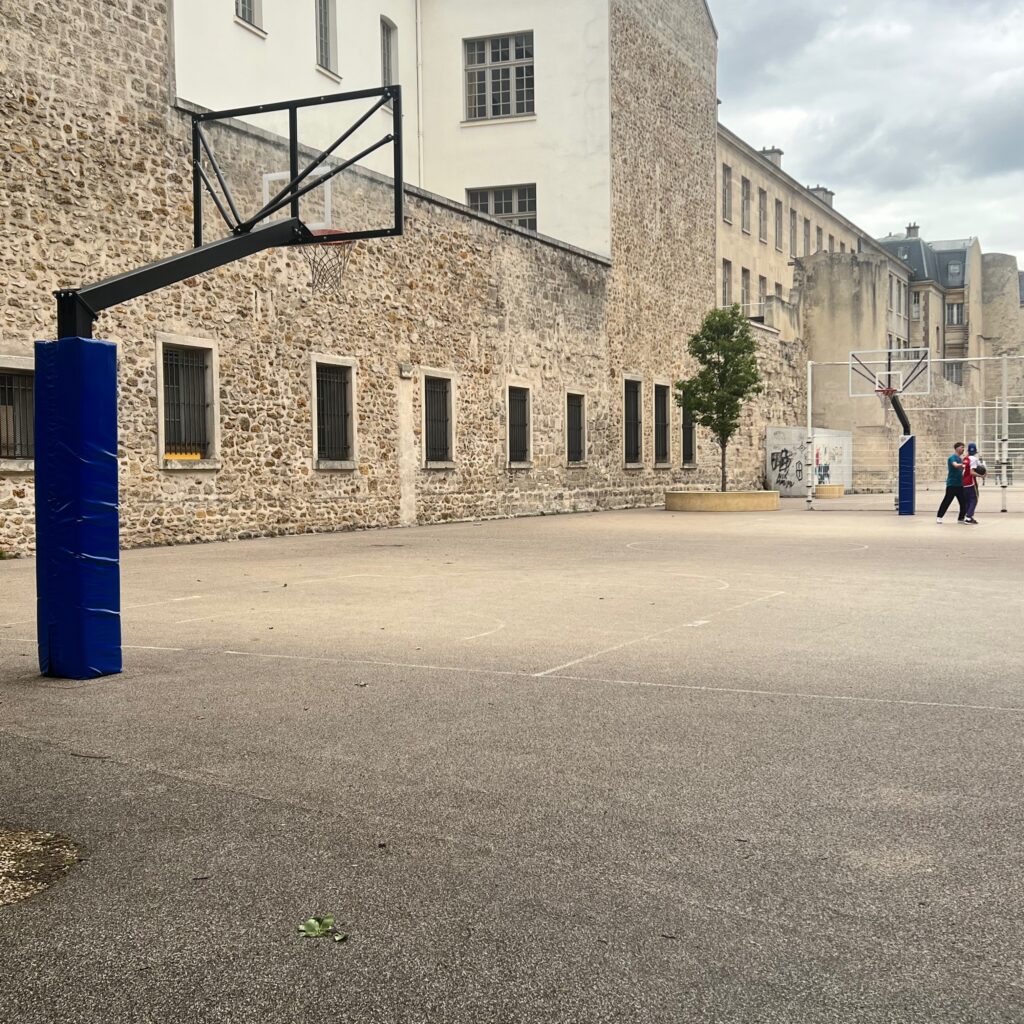
That’s because they play out against the longest remaining stretch of the city wall that King Philippe Auguste built toward the end of the twelfth century. If you want to know more about the history of this fascinating quarter, head up to 46 Rue François Miron, where the Maison d’Ourscamp is brim-full with old maps and books, not to mention helpful staff who lead tours of the atmospheric nooks of this ancient building, including the thirteenth-century Gothic-style cellar.

Event Seven – ‘Cycling’

You can’t miss cyclists in Paris — there are so many of them. More people now travel by bike than by car in the city, which means we all become spectators of the activity, if only to keep safe! If you prefer to participate in Parisian cycling (and not just watch out for it as you duck and weave across streets), doing so is easier than ever.
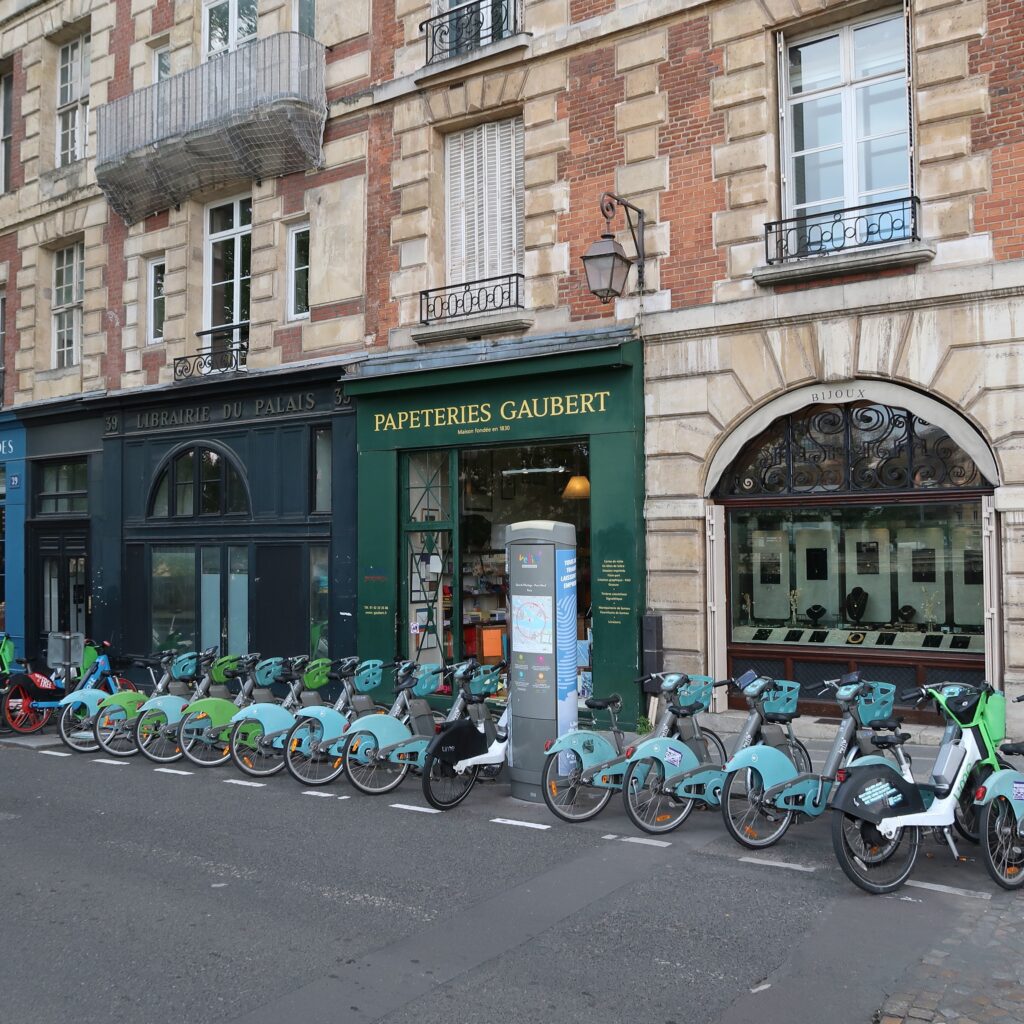
Thirty kilometres of new cycle paths have been installed in the lead-up to the Olympics, and the Vélib public bicycle sharing system now has over 1,400 dockings points in Greater Paris, with 19,000 bikes on offer.
Event Eight – ‘Walking’
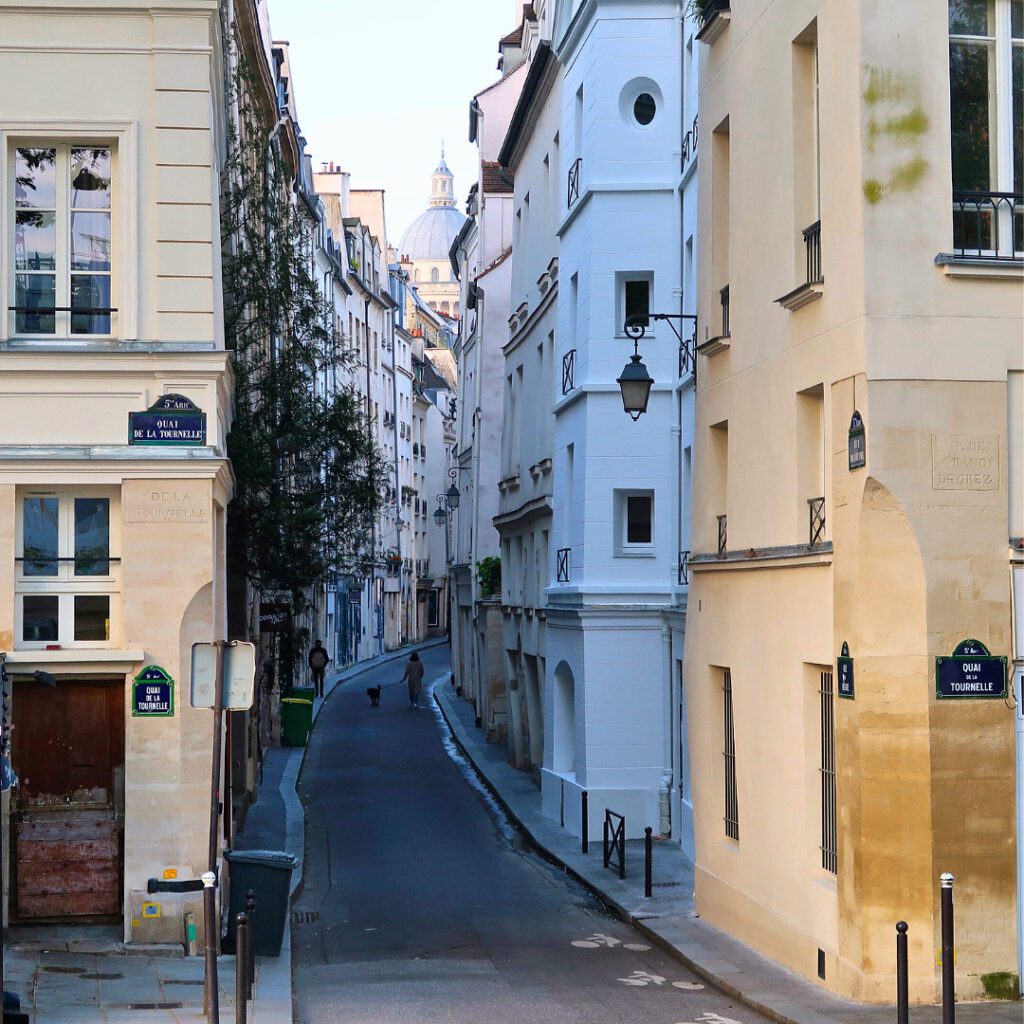
One of the most enjoyable Parisian pastimes is surely sitting en terrasse and watching the world stroll by. But in Paris, walking is more than a spectator sport — it’s something in which everyone can easily participate, because Paris makes walking so pleasurable that it barely feels like an effort. Whether you’re ambling about the historic streets of the Latin Quarter or Marais, strolling along sunny boulevards, or meandering around the parterres and ponds of the city’s parks, walking in Paris gives you time to focus on the various architectural details: elaborate domes, majestic doorways, quirky windows, dainty lamps … As Edmund White writes in his brilliant book The Flâneur, Paris ‘is a world meant for the walker alone, for only the pace of strolling can take in all the rich [if muted] detail.’
Event Nine – ‘Rowing’

I don’t know about you, but I get tired just watching rowing. It just looks so … well, the French expression C’est la galère comes to mind. (The phrase means ‘It’s a pain/hassle/nightmare’ but etymologically it refers to the galley of an ancient ship, a purgatory where slaves in chains once rowed until they dropped.) For me, a much cruisier way to watch the Parisian world glide by is to sit by the Seine — ideally in picnic mode — as the various barges and boats make their way up- and downstream. C’est (much more) formidable.
Finale Event – ‘Climbing’

What better way to complete The Alternative Paris Olympics than by ascending the city’s most iconic monument? Participants will need to mentally (and possibly physically) prepare to climb 674 steps — which takes you to the second floor, from which everyone heading to the top must take the lift. Of course, you can also choose to remain a spectator and whiz all the way north, watching the puffed climbers as you go. Whichever way you reach the summit, the spectacular view surely deserves a celebration, if not with a gold medal, then at least a glass of sparkling bubbles from the sweet little champagne bar there.

